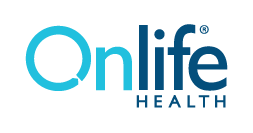22 Nov Onlife CEO Shares His Insights As A Panelist for a National Healthcare Conference
Capital One Commercial Banking recently hosted its 2017 Healthcare Services Conference in Washington D.C., with more than 250 registered attendees from healthcare, finance, government and public health agencies.
Mark McConnell, CEO of Onlife Health, served as a panelist for a roundtable discussion on Managing Populations through Physician Platforms and shared his insights from the conference.
What are the challenges facing physicians when it comes to managing their patients?
The confluence of several factors is creating new demands and pressures on physicians. Simple supply and demand is one key issue. The number of doctors and nurses, especially primary care doctors in rural areas, is not keeping pace with the increased demand created by a demographic tsunami of aging baby boomers, who are requiring more care as they grow older. You also have an influx of patients entering the system because of the Affordable Care Act. And then there are the economic factors. The increased prevalence of high-deductible healthcare plans is shifting the cost of care to the patient, for example, and the traditional fee-for-service payment system is giving way to value-based care.
As a result, physicians are being “squeezed” by two opposing demands: seeing more patients with more complex medical conditions yet simultaneously required to maintain a high level of care in order to maintain their rate of reimbursement, which is already declining and will eventually be 100%-based on the quality (value) of the care they deliver.
So how can physicians address these challenges?
One of the keys is to have the patient become more engaged in his or her own care in order to improve outcomes. It’s been estimated that patients spend 99.98% of their lives outside of the doctor’s office in an environment where family, community and culture, not the recommendations made during a 15- to 20-minute office visit, are the most powerful influencers of behavior. But now, through internet-based provider platforms, physicians have access to tools that can encourage, support, educate and motivate each patient to make healthier decisions and take healthier actions. In other words, providers now have an enormous opportunity to build a stronger relationship with patients between office visits.
Does Onlife Health currently offer such a platform?
In the past, our experience in the provider market has been limited. But as value-based care continues to expand and patients bear more financial responsibility for their care, there is a growing financial incentive for physician practices to use a platform such as ours. And because we’ve taken a One Platform, Many Markets approach, we have the ability to quickly and easily configure and scale our platform to serve the physician market, just as we’ve taken our well-being platform for commercial health insurance accounts and configured it for Medicare Advantage plans and Managed Medicaid plans.

What are the key features or concepts that make for a successful physician platform?
First, the platform has to be personalized. It’s can’t be cookie-cutter approach. It has to engage the patient right where he or she is and provide the tools, incentives and educational resources that directly address the patient’s specific medical situation. To create this personalized experience, Onlife developed the My Journey concept. By analyzing information from the patient’s health assessment, biometric screenings, health records and other data sources, we identify each person’s specific health issues and then create a prioritized list of healthy-living activities that are displayed on his or her personal dashboard. As a result, each patient has a customized step-by-step plan; each person knows The Next Right Thing To Do in order to improve their health.
Second, the platform needs to create a seamless experience for the user. The healthcare experience for most users is already too fragmented and therefore frustrating, which can only depress engagement. At Onlife, we incorporate all of the components and services of a well-being program into a single platform to increase efficiency, reduce costs and increase member satisfaction. We understand that our customers offer multiple services, so we have the ability to seamlessly integrate those services into a single user experience.
In what other ways can a provider platform help physicians provide better care for their patients?
As was mentioned before, the baby-boom generation is having a profound impact on healthcare. As they grow older, more and more baby boomers are taking a “thrive-in-place”approach. They’re choosing to access care from home rather than moving to a senior-care facility. That creates an isolating situation in which access to the healthcare system becomes limited. But with a physician platform, both caregivers and patients have better access to the information and resources they need.
It’s also important to note that healthcare is now entering The Age of the Active Consumer. That’s because consumers are paying more and more for health insurance. For example, the average annual out-of-pocket costs per patient rose almost 230 percent between 2006 and 2015. 1 Given human nature, the result is predictable. With more “skin in the game,” consumers are becoming increasingly motivated to find ways to take charge of their health, and that inevitably leads to higher engagement with any kind of well-being program or physician platform.
Any final thoughts?
Technology is transforming the physician/patient relationship. At Onlife, for example, our services and solutions can give providers the capability to reach out to their patients and usher in a new era of connectivity in which care, communication and education are no longer confined to the doctor’s exam room. And because of increasing financial incentives, both physicians and consumers have even more reason to use this technology, connect with each other, and improve the efficiency and effectiveness of the healthcare system.
1 Konrad, Walecia. “How to tame runaway out-of-pocked medical costs.” http://www.cbsnews.com/news/medical-bills-stressing-out-heres-what-you-need-to-know/.

